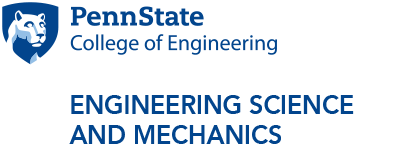Humans and AI in the physical world: Some ongoing work and future opportunities
Abstract:
The 2024 Nobel Prizes in Physics and Chemistry were both awarded in the field of Artificial Intelligence (AI). John J. Hopfield and GeoMrey E. Hinton pioneered most of the machine learning methods that we nowadays take for granted, and established “the physicist’s way of thinking” in developing and understanding early neural networks. David Baker, Demis Hassabis and John M. Jumper used advanced computational tools, including contemporary supervised and unsupervised learning with built-in chemical principles, to model and design complex protein structures: one of the most vexing problems in the life sciences. Were the back-to-back awards a coincidence or planned?
While of course I cannot claim to know what the committees were thinking, in this talk I will argue that the double award strengthens the urgency to reorient engineering research in a new direction: while large language models and their implications are occupying the every person’s involvement with AI at present, the future belongs to the interaction of intelligent machines with physical systems, including the human body and its environs. My own work presents some interesting cases where endowing optical physics with data driven approximations to complex phenomena, e.g. strong volumetric scattering, led us to discover new fundamental principles in imaging theory. We then put these in service to practical applications, such as metrology and inspection for the semiconductor and pharmaceutical industries, with the added benefit of explain ability through adherence to the underlying physics.
At the concluding part of the presentation, I would like to invite everyone to imagine a future where humans and intelligent machines work seamlessly together to accomplish demanding, delicate and sensitive physical tasks: child and elderly care at the home and hospital; food production, quality assurance and preparation; transportation, travel and hospitality; urban management and sanitation; and so on. From our positions as leading academics and entrepreneurs we are presented with rich opportunity and, at the same time, grave responsibility to maximize the benign potential of the new technologies, while also educating the general public, legislators and regulators toward balanced, ethical and safe societal adoption.
Bio:
Bio: George Barbastathis received the Diploma in Electrical and Computer Engineering in1993 from the National Technical University of Athens (Εθνικ? Μετσ?βιο Πολυτεχνε?ο) and the MSc and PhD degrees in Electrical Engineering in 1994 and 1997, respectively, from the California Institute of Technology (Caltech). After post-doctoral work at the University of Illinois at Urbana-Champaign, he joined the faculty at MIT in 1999, where he is now Professor of Mechanical Engineering. He has held sabbatical appointments at Harvard University and the University of Michigan – Shanghai Jiao Tong University Joint Institute (???????), and has been one of the longest-serving Principal Investigators with the Singapore-MIT Alliance for Research and Technology (SMART).
His research interests are in machine learning and optimization for computational imaging and inverse problems; and in optical physics, including statistical optics, scattering theory, and artificial optical materials and interfaces. He is presently leading the AFOSR MURI “Searching for what’s new: the systematic development of dynamic x-ray microscopy,” whose goal is to combine dynamical principles and machine learning for imaging extreme phenomena with submicrosecond and sub-nanometer dynamics. He is member of the Institute of Electrical and Electronics Engineering (IEEE) and the American Mathematical Society (AMS), a Fellow of the Optical Society of America (OSA), which was recently rebranded as Optica, and a Fellow of the Society for Photo Instrumentation Engineering (SPIE).
He has served as Associate Editor for the Journal of the Optical Society of America A and the journal Optica, as a committee member, chair and co-chair of numerous conferences, and in several cofounding and consulting capacities for incumbent and start-up companies, as well as law firms. In his free time, he enjoys arthouse movies, urban art and design, and aspires to become more fluent in Thai and Mandarin Chinese.
Event Contact: Lana Fulton



